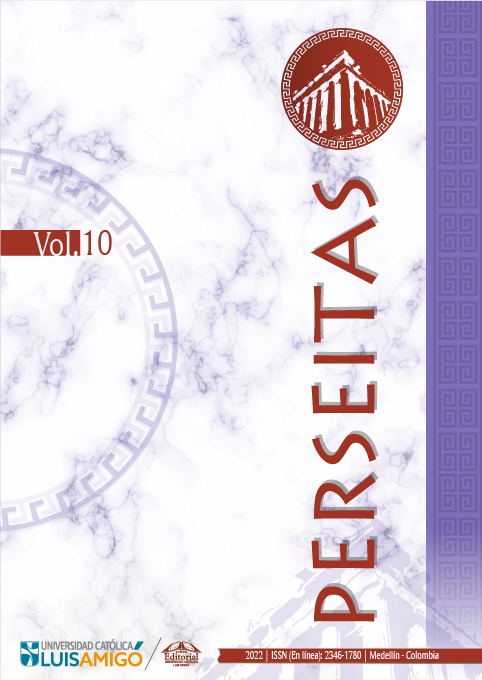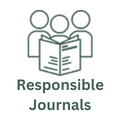Authenticating, forging and patrimonializing. The Alzate ceramics and the transformation of its valuation
DOI:
https://doi.org/10.21501/23461780.3986Keywords:
Alzate, Aura, Authenticity, Ceramics, Forgery, Heritage, ValuationAbstract
The Alzate ceramics case is a well-known episode in which a group of local experts and some European scientists were deceived by a family from the city of Medellin in the early twentieth century known as the Alzate family, who manufactured clay ceramics for commercial purposes, which ended up in some of the most important museums in the world such as the Museum of Natural History in New York, the Trocadero Museum in France, the Museum of Neuchâtel in Switzerland, among other institutions, as original pre-Columbian. This particular fact, configures a chapter without precedents as far as the valuation of the pre-Columbian cultural patrimony is concerned, the reinterpretation of this one on the part of some local craftsmen and the commercialization of the material past of the natives that gave origin to a local artistic expression based on indigenist models of the past. On the other hand, it is an episode like few others in which an object goes from being considered as an invaluable material
evidence of the American cultures of before the conquest, to being considered as forgeries of little value to be considered later as important pieces for their aesthetics and cultural load being currently guarded by several museum institutions in Colombia and the world.
Downloads
References
Arango, L. M. (1905). El Museo de Don Leocadio María Arango. Imprenta Oficial.
Benjamín, W. (1989). La obra de arte en la época de su reproductibilidad técnica. En W. Benjamin. Discursos Interrumpidos I. Taurus.
Botero, C. I. (2006). El redescubrimiento del pasado prehispánico de Colombia: viajeros, arqueólogos y coleccionistas 1820-1945. Unibiblos.
Bruhns, K. O., & Kelker, N. L. (2016). Faking the Ancient Andes. Routledge.
Garrido, F., & Valenzuela, C. (2020). Falsificaciones y arqueología: Ricardo Latcham, la escritura prehispánica y los piratas de guayacán. Boletín del Museo Chileno de Arte Precolombino, 25(2), 127-140. https://dx.doi.org/10.4067/S0718-68942020000200127
Giraldo, E. (2015). “A” de Alzate. Autenticidad nominal en una apropiación anacrónica del arte colombiano. En C.F. Guzmán Cuberos et al., Ensayos sobre historia del arte en Colombia 2013-2014. Premio Nacional de Crítica X versión. Ediciones Uniandes.
Gómez Gutiérrez, A. (2011). La Expedición Helvética: viaje de exploración científica en Colombia en 1910 de los profesores Otto Fuhrmann y Eugène Mayor. Editorial Pontificia Universidad Javeriana.
Joyce, R. A. (2019). Making Markets for Mesoamerican Antiquites. En C. G. Tremain, & D. Yates. (eds.), The market for Mesoamerica: Reflection on the sale of pre-columbian antiquites. University Press of Florida.
López, P. (4 de septiembre de 2019). The aesthetics of looting: how mass looting of archaeological pottery shaped nowadays conservation and restoration principles in Colombia. E. M. Fracois & F. Peters (eds.). What is the essence of conservation?. Materials for a discusión [Conferencia general]. Papers from the ICOM-CC and ICOFOM session.
Molina Londoño, L. F.. (1990). El célebre engaño de la Cerámica Alzate: falsos precolombinos de una familia antioqueña, hoy son joyas de museo. Credencial Historia, (7). http://www.banrepcultural.org/bibliotecavirtual/credencial-historia/numero-7
Montoya y Flórez, J. B. (1938). El cuerpo humano en el arte. http://hdl.handle.net/10784/12459
Montoya y Flórez, J. B. (1922). Cerámicas Antiguas Falsificadas en Medellín. Repertorio Histórico de Antioquia de la Academia Colombiana de Historia, 4(1-4), 504-514. http://academiaantioquenadehistoria.org/revista/index.php/repertoriohistorico/article/view/369
Moscoso, O. (2016). El mercadeo de la memoria precolombina a principios del siglo XX en Medellín. El caso de las cerámicas Alzate [Tesis de Maestría, Universidad Nacional de Colombia].
Olano Estrada, R. (2013). Guía de Medellín y sus alrededores con ilustraciones 1916. Universidad Pontificia Bolivariana.
Radetich Filinich, N. (2012). El arte, la técnica y lo político: a propósito de La obra de arte en la época de su reproductibilidad técnica, de Walter Benjamin. Argumentos, 25(68), 15-26. http://www.scielo.org.mx/
scielo.php?script=sci_arttext&pid=S0187-57952012000100002
Ricoeur, P. (2004). La memoria la historia y el olvido. Fondo de Cultura Económica.
Upegui Montoya, J. (1988). Lo Alzate y su validez plástica. De lo “autentico” y lo “falso”. En Universidad de Antioquia, Colección Cerámica Alzate. Catálogo de exposición (pp 31-38). Museo Universitario Universidad de Antioquia.
Vélez Vélez, L. (1967). La cerámica Alzate, una pintoresca farsa científica. Boletín del Instituto de Antropología, 3(10), 155-175. https://revistas.udea.edu.co/index.php/boletin/article/view/341393
Published
How to Cite
Issue
Section
License
Copyright (c) 2022 Perseitas

This work is licensed under a Creative Commons Attribution-NonCommercial-NoDerivatives 4.0 International License.
La revista y los textos individuales que en esta se divulgan están protegidos por las leyes de copyright y por los términos y condiciones de la Licencia Creative Commons Atribución-No Comercial-Sin Derivar 4.0 Internacional.
















